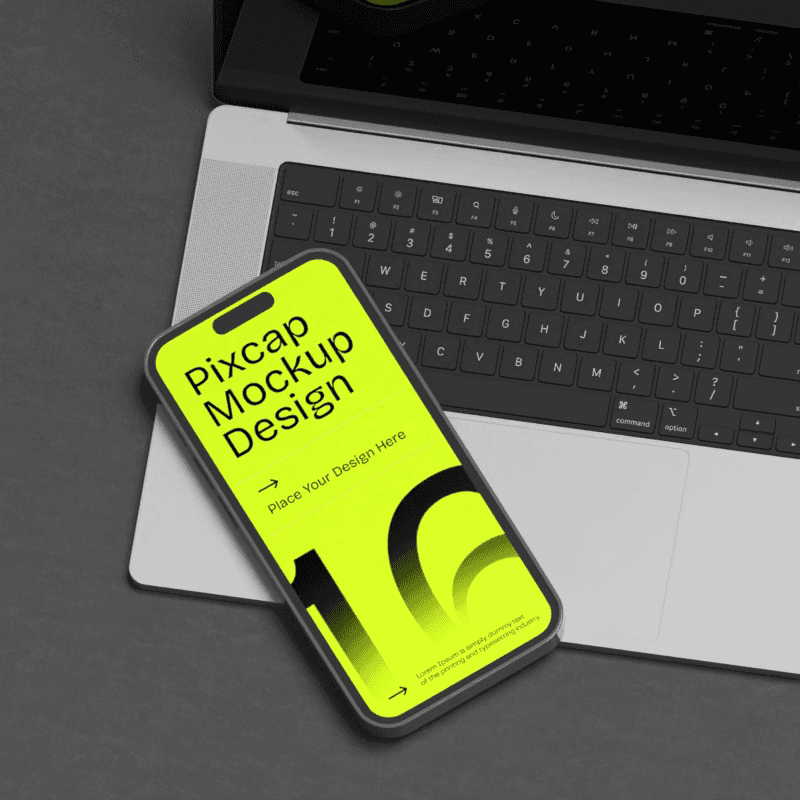In today's competitive digital landscape, branding design plays a crucial role in the success of businesses. Whether you are a designer, a small to medium-sized enterprise (SME), an advertising agency, or an educational institution, understanding the importance of branding design in digital marketing can have a significant impact on your online presence.
By incorporating branding design into your marketing strategies, you can effectively communicate your brand's identity, values, and offerings to your target audience.
In this comprehensive guide, we will explore the role of branding design in digital marketing, providing insights, practical tips, and real-world examples to help businesses of all sizes leverage the power of branding design effectively.
What is Branding Design?
Branding design encompasses the visual elements that form part of a company's brand identity.
It includes the logo, color scheme, typography, and imagery brand elements that work together to convey a unified message about the brand's character and its promise to customers.
Branding design isn't just about aesthetics; it's a strategic tool used to create a strong brand perception and foster an emotional connection with the audience. It should reflect the brand's vision, differentiate it from competitors, and be adaptable to various media.
Good branding design is consistent in its application, ensuring that no matter where a customer encounters the brand, be it online or offline, they receive the same brand experience. This consistency helps in building recognition and reinforcing brand memory among customers, which is vital for long-term success in the digital arena.
The Crucial Role of Branding Design
Branding design is more than just a logo or a color palette; it's the visual and emotional signature of a company. It's what sets a business apart from its competitors and becomes a shorthand for the brand's personality and reputation.
In the crowded online marketplace, a strong branding design captures attention, fosters recognition, and builds trust with potential customers. It's a critical tool for creating a cohesive brand experience across various platforms, from websites to social media visual to digital ads.


Effective branding design communicates a company's identity and values without the need for words, resonating with customers on a deeper level and driving loyalty. As the cornerstone of marketing efforts, it's essential not to overlook the power of strong branding design in establishing and growing a business's digital presence.
Branding in the Digital Marketing Landscape
The Nexus between Branding and Digital Marketing
The link between branding and digital marketing is undeniable. In the digital marketing landscape, branding design serves as the foundation upon which all other marketing efforts are built. It is the thread that weaves together different marketing channels to present a coherent brand story.
A well-created and well-designed brand creates a solid and memorable identity that can be leveraged across digital platforms, from a company's website to its social media pages, email campaigns, and online advertisements.
Branding design helps to shape the way a brand is perceived online, influencing the user experience and, ultimately, the effectiveness of digital marketing initiatives. By ensuring that branding is consistent and strategic, digital marketers can improve brand recognition, increase customer loyalty, and create a more impactful online presence that drives business growth.
Why Branding Matters in Digital Marketing
Branding is a critical component of digital marketing because it is how a business communicates its essence to the world.
In the digital space, where competition is intense and attention spans are short, branding design helps businesses stand out and make a memorable impression. It also contributes to the perceived value of a brand, influencing the decision-making process of consumers.
When executed effectively, branding fosters a sense of quality and credibility, encouraging customer engagement and loyalty. Moreover, strong branding design can drive a consistent message across all digital marketing channels, ensuring that every touchpoint with customers reinforces the brand's message.
This consistency is key to building brand equity, which can result in a loyal customer base and an enhanced online reputation. Ultimately, branding isn't just a part of the marketing strategy; it's the foundational element that supports and amplifies all digital marketing efforts.
Branding Design for Specific Audience Groups
How SMEs Can Benefit from Effective Branding Design
Small to medium-sized enterprises (SMEs) can gain a competitive edge through effective branding design. For SMEs, branding is not just a marketing tactic; it's a way to tell their story, convey their values, and connect with customers on a personal level.
An impactful branding design helps SMEs stand out in a crowded market, where they often compete against larger companies with more resources. It also provides a sense of stability and trustworthiness that can be crucial for attracting and retaining customers. Furthermore, a strong brand identity can open doors to new partnerships and business opportunities.
By investing in professional branding design, SMEs can ensure that every customer interaction is an opportunity to reinforce their brand stand and their market position and build brand loyalty. This strategic approach to branding design can lead to increased brand recognition, customer engagement, and ultimately, business growth.
Utilizing Branding Design in Advertising Agencies and Marketing Firms
Advertising agencies and marketing firms can harness the power of branding design to create compelling campaigns that resonate with audiences.
For these companies and brands, branding design is not just about visual appeal; it's a strategic asset that can be used to tell a client's story in a way that is both engaging and persuasive.
A well-thought-out brand design can serve as the backbone of a campaign, providing a consistent theme that can be adapted across various media and formats. This consistency ensures that the brand message is clear and impactful, regardless of where it appears. By utilizing branding design principles, agencies and firms can improve the effectiveness of their campaigns, helping clients to achieve a stronger market presence and drive consumer action.
Moreover, their own branding design often sets the tone for their creative approach, showcasing their expertise to potential clients and establishing their reputation in the industry.
Branding Design in the Education Sector
In the education sector, branding design plays a pivotal role in how institutions are perceived by students, parents, and the community.
A strong brand design can communicate the institution's ethos, values, and commitment to education. It can also be a determining factor for students when selecting a school or university, as it reflects the quality and nature of the educational experience on offer.
Educational institutions can use branding design to showcase their unique identity, highlight their academic achievements, and promote the extracurricular opportunities they provide. It's important for these institutions to have a professional and consistent brand image across all platforms, including their website, promotional materials, and campus signage.
This consistency helps build trust and recognition, which is essential for attracting new students and fostering alumni relations. Effective branding design can thus support the institution's goals by enhancing its reputation, brand marks and appeal within the educational community.
Essential Elements of Effective Branding Design
Definitive Markers of Successful Branding Design
Successful branding design is characterized by several definitive markers. Firstly, it's distinctive and memorable, making it easy for customers to recognize and recall the brand. This often involves a unique, logo design and a strategic color scheme that stands out in the market.
Secondly, successful branding is consistent across all platforms and touchpoints, which reinforces the brand's message and identity. This includes online presence, packaging, and any customer-facing materials.
Thirdly, it's relevant and resonates with the target audience, speaking to their needs, desires, and emotions.
Fourthly, it tells a story, allowing customers to connect with the brand on a deeper level.
Finally, effective branding design is flexible, enabling the brand to evolve over time while maintaining its core identity. These markers are integral to building a strong brand that not only attracts attention but also retains customer loyalty in the long term.
Key Tenets of Creating a Strong Brand Design
Creating a strong brand design hinges on several key tenets.
Cohesiveness is crucial; every element from typography to imagery should work in harmony to convey the brand's core message. Authenticity also plays a vital role; the brand and visual identity must be true to the company's values and mission to foster trust and credibility with the audience. Simplicity is another important aspect; a clear, uncluttered design is often more effective in communicating key messages and making a lasting impact.
Moreover, adaptability is essential to ensure the brand design can be effectively applied across various mediums and evolve with market trends.
Lastly, differentiation is key; a brand must stand out in a crowded market by offering a distinctive value proposition.
Adhering to these principles helps create a compelling brand identity that can captivate and engage customers.
Branding Design Strategies for Digital Marketing
Implementing Branding Design in Your Digital Marketing Plan
Incorporating branding design into your digital marketing plan is a strategic move that can pay dividends.
Start by ensuring your brand design is reflected in all online assets, including your website, social media profiles, and digital content.
Consistency is key, so use the same color schemes, fonts, and logos throughout to reinforce brand recognition. Next, consider the user experience on digital platforms; your branding design should not only be visually appealing but also functional, making navigation intuitive and information accessible.
Furthermore, tailor your branding to suit different digital channels while maintaining a unified brand identity. For example, what style that works on your website might need to be adjusted for social media platforms.
Finally, track the performance of your branding elements using branding tools to understand how they're contributing to your marketing goals and where adjustments may be needed.
Maximizing ROI Through Effective Branding Design
To maximize return on investment (ROI) through branding design, it's essential to align branding efforts with business objectives.
Start by identifying key performance indicators (KPIs) that are directly impacted by the branding process, such as brand awareness, customer acquisition costs, and customer lifetime value.
Implement branding elements strategically to influence these KPIs positively. For example, a well-designed logo and a strong brand message can enhance brand recall, leading to more organic customer acquisition and lower advertising costs. Invest in high-quality visuals and messaging that accurately represent your brand, as this can increase conversion rates and customer loyalty.
Additionally, monitor and analyze customer feedback to understand how your branding is perceived and make necessary adjustments. By actively managing the branding design elements and measuring their impact on your business goals, you can make more informed decisions that improve ROI.
Conclusion
Branding design plays a crucial role in the success of any business. It not only helps establish brand identity and awareness but also influences customer behavior and purchasing decisions.
Constantly reviewing and refining your branding efforts can also ensure that your brand stays relevant and resonates with customers in a fast-paced, ever-changing market. Remember, effective branding design is not just about creating a visually appealing logo or website; it's about creating a strong emotional connection with your audience and driving tangible business results. So invest time, resources, and effort into developing a solid branding strategy to achieve long-term success for your brand.














